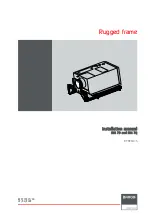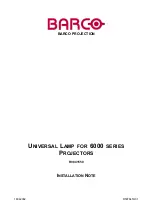
69rlq62d-f714peg4 * Memec (Headquar
ter
s) - Unique
Tec
h,
Insight,
Impact
A# 12101050
69rlq62d-f714peg4 * Memec (Headquar
ter
s) - Unique
Tec
h,
Insight,
Impact
MAR
VELL CONFIDENTIAL,
UNDER ND
A# 12101050
69r
lq62d-f714peg4 * Memec (Headquar
ters) - Unique
T
ech, Insight, Impact * UNDER ND
A# 12101050
MAR
VELL CONFIDENTIAL - UNA
UTHORIZED DISTRIB
UTION OR USE STRICTL
Y PR
OHIBITED
Slave Power Management Unit
Copyright © 12/13/06 Marvell
CONFIDENTIAL
Doc. No. MV-TBD-00 Rev. A
December 13, 2006
Document Classification: Proprietary Information
Page 247
Not approved by Document Control. For review only.
9.2.2.1.3
D2 State
D2 state is a low-power state that can be entered when the MPMU is in S0 state. In this state, power consumption
is reduced below the normal power consumption of the application subsystem while retaining state. The penalty
for this low-power state is that all activity within the application subsystem except for PD_BPMU stops. Since
internal application subsystem activity has stopped, recovery from D2 state must be through an external event,
OS timer event, or a real-time clock event. D2 state can be exited to either D1 or D0 state. If D2 state is exited to
D0 state, recovery resumes at the instruction following the write to the
“Core PWRMODE Register (CP14
Register 7)”
. If D2 state is exited to D1 state, operation by the enabled units resumes with normal operation when
the clocks are restarted.
Preparation for D2 State
The following steps must be taken before entering D2 state:
•
The D2 state unit operational bits in the
“Application Subsystem D2 Configuration Register (AD2R)”
must
be set for the application subsystem SRAM banks that are to retain state during D2 state. The PD_BPER
power domains always retain state in D2 state. The PD_BPMU power domain always remains powered up
in D2 state.
•
The memory controller must be configured properly to ensure DDR SDRAM contents are maintained during
D2 state. See the Memory Controller chapter for more details.
•
The USB host functional clock must be disabled before entering any low-power state. See the USB Host
Controller chapter.
•
The appropriate registers in the BPMU must be initialized to determine the wake-up enable sources from D2
state:
—
“Application Subsystem Wake-Up from D2 to D0 State Enable Register (AD2D0ER)”
for exit to D0
state
—
“Application Subsystem Wake-Up from D2 to D1 State Enable Register (AD2D1ER)”
for exit to D1
state
•
All peripheral units except the OS timer must be stopped/disabled. (Note: The OS timer can be on in D2
state.) The clocks to these peripherals are stopped, and they do not function normally.
Entering D2 State from D0 State
Entry into D2 state from D0 state is performed by writing the mode bits in the PWRMODE register to D2 state
(see
Section 4.5.16
). SW should make sure that LCD controller completes output of the current frame buffer.
The sequence for entering D2 state is the following:
•
All core activity is stopped, and all interrupt requests to the core are held.
•
All core loads are completed and core stores sent to the system bus.
•
The core clock is stopped.
•
All new transactions from the USB host, USB 2.0 high-speed client controller, 2-D graphics controller,
Intel® Quick Capture Interface, or DMA controller are ignored.
•
The external and internal memory controllers complete all outstanding transactions in their buffers, and the
DDR SDRAM memory controller places the DDR SDRAM in self-refresh mode.
•
Application subsystem MFPs are set for D2 state operation.
















































